The construction of the wonderful canon of logarithms
The construction of the wonderful canon of logarithms
The construction of the wonderful canon of logarithms
You also want an ePaper? Increase the reach of your titles
YUMPU automatically turns print PDFs into web optimized ePapers that Google loves.
I<br />
I<br />
Construction <strong>of</strong> <strong>the</strong> Canon. 25<br />
and let <strong>the</strong> differences c d and d e be equal. Let<br />
b d, <strong>the</strong> mean <strong>of</strong> <strong>the</strong>m, be doubled by producing<br />
<strong>the</strong> line from b beyond e to f, so that b f is double<br />
b d. <strong>The</strong>n b f is equal to both <strong>the</strong> lines b c <strong>of</strong><br />
<strong>the</strong> first logarithm and b e <strong>of</strong> <strong>the</strong> third, for from<br />
<strong>the</strong> equals b d and d f take away <strong>the</strong> equals c d<br />
and d e, namely c d from b d and d e from d f,<br />
and <strong>the</strong>re will remain b c and e f necessarily equal.<br />
Thus since <strong>the</strong> whole b f is equal to both b e and<br />
e f, <strong>the</strong>refore also it will be equal to both b e and<br />
b c, which was to be proved. Whence follows <strong>the</strong><br />
rule, if <strong>of</strong> three <strong>logarithms</strong> you double <strong>the</strong> given<br />
mean, and from this subtract a given extreme, <strong>the</strong><br />
remaining extreme sought for becomes known; and<br />
if you add <strong>the</strong> given extremes and divide <strong>the</strong> sum<br />
by two, <strong>the</strong> mean becomes known,<br />
38. Offour geometricalproportionals, as <strong>the</strong> product <strong>of</strong> <strong>the</strong><br />
means is equal to <strong>the</strong> product <strong>of</strong> <strong>the</strong> extremes ; so <strong>of</strong> <strong>the</strong>ir<br />
<strong>logarithms</strong>, <strong>the</strong> sum, <strong>of</strong> <strong>the</strong> means is equal to <strong>the</strong> sum <strong>of</strong> <strong>the</strong><br />
extremes. Whence any three <strong>of</strong> <strong>the</strong>se <strong>logarithms</strong> being<br />
given, <strong>the</strong> fourth becomes known.<br />
Of <strong>the</strong> four proportionals, since <strong>the</strong> ratio between<br />
<strong>the</strong> first and second is that between <strong>the</strong><br />
third and fourth ; <strong>the</strong>refore <strong>of</strong> <strong>the</strong>ir <strong>logarithms</strong> (by<br />
36), <strong>the</strong> difference between <strong>the</strong> first and second is<br />
that between <strong>the</strong> third and fourth. Hence let<br />
such quantities be taken in <strong>the</strong> line b f as that b a<br />
b a c d e g f<br />
I 1—<br />
1<br />
1—<br />
may represent <strong>the</strong> first logarithm, b c <strong>the</strong> second,<br />
b e <strong>the</strong> third, and b g <strong>the</strong> fourth, making <strong>the</strong> dif-<br />
D<br />
ferences<br />
•


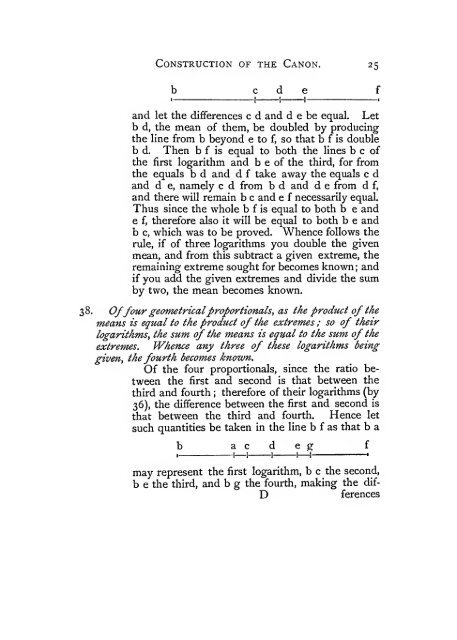
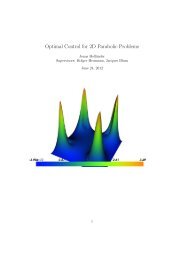
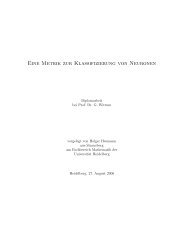
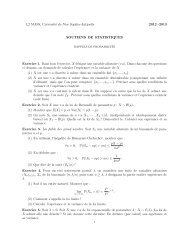
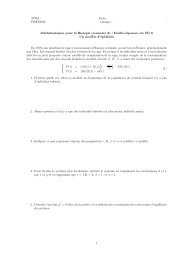


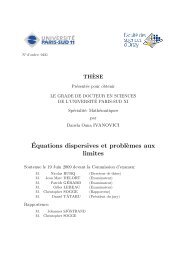
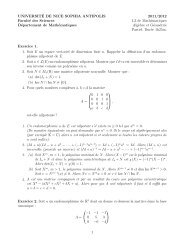
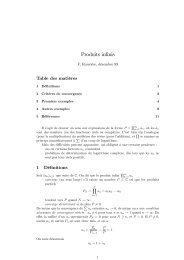
!['eries enti\`eres (+ [D78 Th d'Abel angulaire])](https://img.yumpu.com/14067031/1/184x260/eries-entieres-d78-th-dabel-angulaire.jpg?quality=85)

